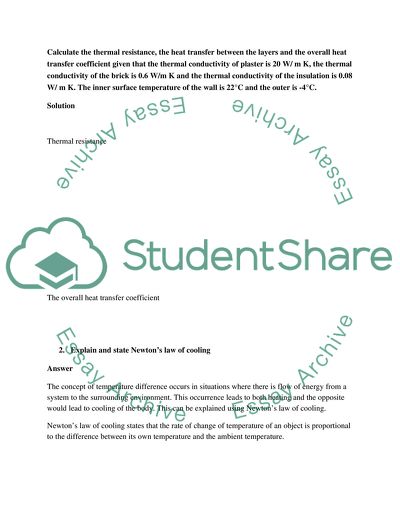Cite this document
(Fouriers Law of Heat Conduction and Newtons Law of Cooling Assignment Example | Topics and Well Written Essays - 1250 words, n.d.)
Fouriers Law of Heat Conduction and Newtons Law of Cooling Assignment Example | Topics and Well Written Essays - 1250 words. https://studentshare.org/engineering-and-construction/1846272-heat-transfer
Fouriers Law of Heat Conduction and Newtons Law of Cooling Assignment Example | Topics and Well Written Essays - 1250 words. https://studentshare.org/engineering-and-construction/1846272-heat-transfer
(Fouriers Law of Heat Conduction and Newtons Law of Cooling Assignment Example | Topics and Well Written Essays - 1250 Words)
Fouriers Law of Heat Conduction and Newtons Law of Cooling Assignment Example | Topics and Well Written Essays - 1250 Words. https://studentshare.org/engineering-and-construction/1846272-heat-transfer.
Fouriers Law of Heat Conduction and Newtons Law of Cooling Assignment Example | Topics and Well Written Essays - 1250 Words. https://studentshare.org/engineering-and-construction/1846272-heat-transfer.
“Fouriers Law of Heat Conduction and Newtons Law of Cooling Assignment Example | Topics and Well Written Essays - 1250 Words”. https://studentshare.org/engineering-and-construction/1846272-heat-transfer.


